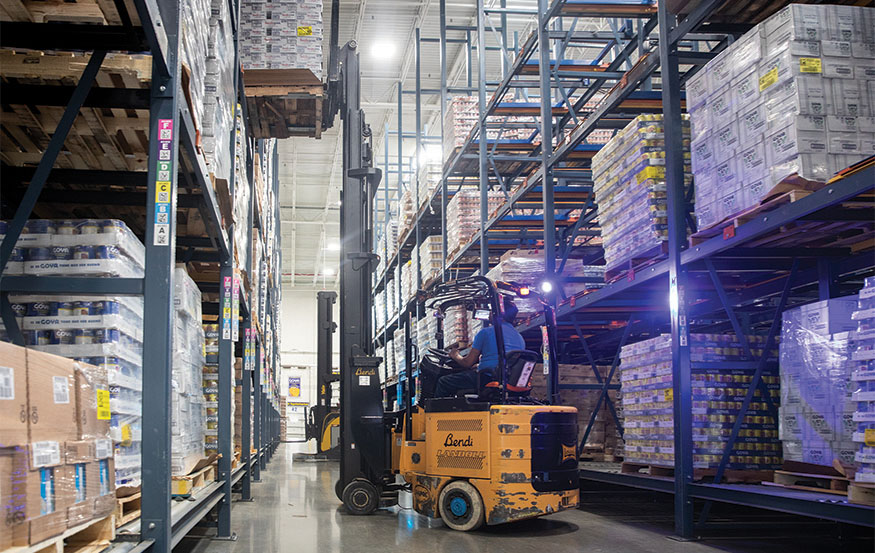Goya Foods Inc.
Jersey City, New Jersey
Square Footage: 643,000 square feet
Products Handled: Hispanic food products
SKUs: 2,700 SKUs
Throughput: 60,000 to 80,000 cases per night, depending on season
Shifts: 2 shifts per day, 6 days per week, with staggered shifts
In Goya Foods’ Jersey City distribution center, lift trucks do all the heavy lifting while the warehouse management system (WMS) uses task interleaving to optimize the work flow. Voice-directed operations round out the package.
Receiving and putaway: Goya receives an advanced ship notification prior to a truck arriving at the dock and all product is received on pallets. Once the receipt is verified, an operator scans the license plate bar code on a pallet, and the WMS chooses a storage location.
The pallet is scanned into a rack or a floor location to complete the process. Once putaway is complete, the WMS looks to see if there is another task in that area for the operator, a strategy referred to as task interleaving.
Picking: Most orders are full cartons picked from the various storage locations to carts pulled by tuggers. The WMS sends the pick location and the number of cartons to be picked from that location using voice. Once the operator confirms a pick, the system directs him to the next task.
Packing and shipping: Once an order is picked complete, the order selector is directed by voice to a dock door. After the cart is staged, the WMS sends the next task to the order selector. Meanwhile, a checker on the dock audits the cart for order accuracy. Once the order is verified, it is loaded onto a truck.
Article topics







